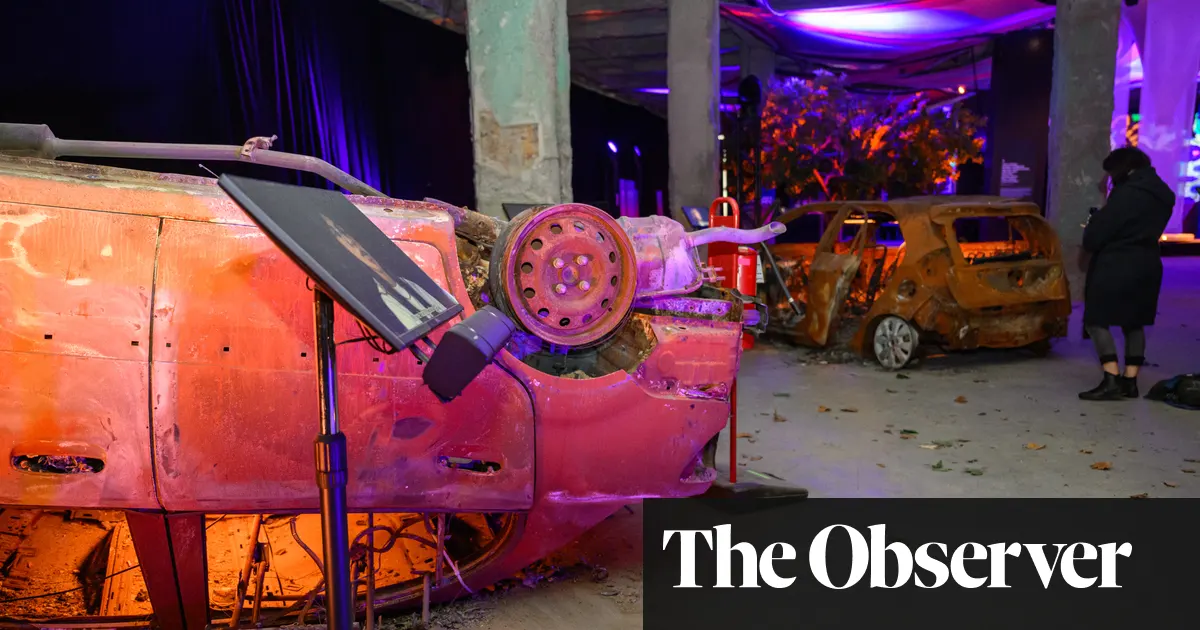Estimated reading time: 4 minutes
In a display that might even make a carnival barker blush for its sheer audacity, New York is now home to an exhibition showcasing the grim relics of a Hamas attack. This isn’t your typical museum exhibit where ancient artifacts are gingerly placed under soft lighting.
Oh no, this is a full-on exploitation extravaganza, where the remnants of violence are now tourist attractions. Because apparently, when we aren’t sure how to solve problems, we put them on display and charge admission. Dive into the heart of controversy with me as we explore what it means to take one of the most sensitive issues in modern politics and turn it into a viewing party.
The Breakdown:
- The Gallery of Gore:
- Isn’t it just lovely to spend an afternoon gawking at remnants of destruction? Instead of maybe, oh I don’t know, using the site for something like reconciliation or peace talks, we make it a spectacle. Grab your popcorn, kids.
- Isn’t it just lovely to spend an afternoon gawking at remnants of destruction? Instead of maybe, oh I don’t know, using the site for something like reconciliation or peace talks, we make it a spectacle. Grab your popcorn, kids.
- Educational or Exploitative?
- This exhibition is so educational that it almost makes you forget it’s probably traumatising the victims all over again. But hey, at least someone’s learning something, right? Maybe next, they’ll have interactive exhibits where you can guess what kind of missile was used.
- This exhibition is so educational that it almost makes you forget it’s probably traumatising the victims all over again. But hey, at least someone’s learning something, right? Maybe next, they’ll have interactive exhibits where you can guess what kind of missile was used.
- Visitor’s Book: Tears or Cheers?
- The guestbook at the end of this terror tour probably reads like a Twitter feed during a political scandal. “So moving!” says one. “Highly inappropriate!” cries another. It’s like we’re all watching the same movie, but some of us thought it was a comedy.
- The guestbook at the end of this terror tour probably reads like a Twitter feed during a political scandal. “So moving!” says one. “Highly inappropriate!” cries another. It’s like we’re all watching the same movie, but some of us thought it was a comedy.
- Merchandising Mayhem:
- Nothing says ‘I visited the grim relics of a Hamas attack’ like a souvenir T-shirt. Because you can’t truly acknowledge a tragedy without some commercial tie-in. Who’s up for a photo with the broken remnants backdrop?
- Nothing says ‘I visited the grim relics of a Hamas attack’ like a souvenir T-shirt. Because you can’t truly acknowledge a tragedy without some commercial tie-in. Who’s up for a photo with the broken remnants backdrop?
- The Guide: Narrator or Narracist?
- Who guides these tours? A historian with a PhD in Middle Eastern conflicts? Or a wannabe actor who thinks tragedy plus time equals comedy? The line delivery between horrific historical facts and museum shop promotions must be Oscar-worthy.
- Who guides these tours? A historian with a PhD in Middle Eastern conflicts? Or a wannabe actor who thinks tragedy plus time equals comedy? The line delivery between horrific historical facts and museum shop promotions must be Oscar-worthy.
The Counter:
- It’s Art, People!
- Let’s call the exhibit what it really is: a bold exploration of art. War and peace have always been popular themes in art, right? Monet did water lilies, New York does missile remnants.
- Let’s call the exhibit what it really is: a bold exploration of art. War and peace have always been popular themes in art, right? Monet did water lilies, New York does missile remnants.
- Healing Through Viewing:
- You know what heals trauma? Reliving it in a public forum surrounded by strangers taking pictures. It’s like group therapy, but with more cameras.
- You know what heals trauma? Reliving it in a public forum surrounded by strangers taking pictures. It’s like group therapy, but with more cameras.
- A Lesson in Geography:
- Fiscal Responsibility:
- We’re economically savvy! Why waste government funds on peace initiatives when you can profit from the relics of unresolved conflicts? Who needs diplomats when you have accountants?
- We’re economically savvy! Why waste government funds on peace initiatives when you can profit from the relics of unresolved conflicts? Who needs diplomats when you have accountants?
- Patriotic Duty:
- Watching, witnessing, visiting—it’s your patriotic duty. Forget voting—viewing is where real change happens. Change in the museum’s cash register, mostly.
- Watching, witnessing, visiting—it’s your patriotic duty. Forget voting—viewing is where real change happens. Change in the museum’s cash register, mostly.
The Hot Take:
Oh, what a twisted world we live in where tragedy becomes a spectacle. We’ve turned the remnants of chaos into a commercial enterprise, and honestly, it’s as if we’re missing the point more spectacularly than an archer with a blindfold.
If we really want to solve issues like this, maybe we should focus less on making them attractions and more on creating dialogue that doesn’t just shock and awe but actually delves into the complexities of human conflict and resolution.
Maybe then, museums can go back to hosting dinosaur bones and ancient pottery, and leave the real, raw, and ragged edges of human horror to the history books where they can educate, not entertain. Imagine that—a world where solutions are as sought after as souvenirs.
Source: ‘We are showing the world what people do’: grim relics of Hamas attack go on display in New York




